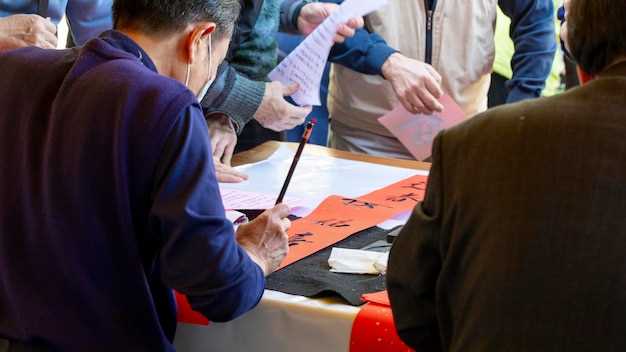
In today’s fast-paced world, organizing events that captivate and engage club members has become a crucial aspect of successful planning. Annual events serve as a cornerstone for fostering a sense of community and strengthening bonds among members. With thoughtful and strategic planning, these gatherings can transform from mere functions into memorable experiences that resonate for years to come.
Effective event planning requires attention to detail, creativity, and an understanding of the interests and preferences of club members. From selecting the right theme to coordinating logistics, every element plays a vital role in ensuring that the event not only meets expectations but exceeds them. Engaging activities, interactive sessions, and opportunities for networking can significantly enhance the overall experience, making members feel valued and involved.
Moreover, incorporating feedback from previous events can provide valuable insights that inform this year’s planning process. By analyzing past successes and areas for improvement, organizers can craft a more tailored and impactful program. This approach not only showcases the club’s commitment to its members but also fosters an atmosphere of inclusivity and excitement around the annual event.
Identifying Themes and Activities that Resonate with Members

Understanding the preferences and interests of club members is crucial for planning engaging annual events. Begin by conducting surveys or holding focus groups to gather insights about themes that resonate with the membership. Consider the demographics and interests of members, as these factors significantly influence the popularity of different event themes.
Seasonal themes are often effective, as they tap into the natural rhythms of the year. For example, fall-themed events can incorporate harvest festivals or Halloween activities, while summer gatherings might focus on outdoor adventures or beach parties. Holidays also provide a rich source of inspiration, allowing clubs to plan events around festive celebrations that members already enjoy.
Incorporating local culture or heritage can create a strong connection with club members. Events that celebrate regional traditions, foods, or music will likely engage members more deeply, fostering a sense of belonging and community. Additionally, integrating popular global trends, such as sustainability or wellness, can attract participation by appealing to current societal values.
Activities should complement selected themes to enhance the overall experience. Interactive options, such as workshops or team-building games, encourage participation while promoting bonding among members. Entertainment, such as guest speakers or live performances, can also elevate the event atmosphere, making it memorable and enjoyable.
Lastly, ensure that activities cater to varying interests and abilities within the club. Providing a mix of active and relaxed options allows all members to engage in a way that feels comfortable. By thoughtfully selecting themes and activities, clubs can create annual events that truly resonate, leaving a lasting impression on all attendees.
Budgeting and Resource Allocation for a Successful Event
Effective budgeting and resource allocation are essential components of successful event planning for any club. The first step in this process involves establishing a clear overall budget that reflects the financial goals and limitations of the club. Start by identifying all potential income sources, including membership fees, sponsorships, and ticket sales. This practice will ensure that the club has a realistic view of available funds.
Next, create a detailed expense list that encompasses all elements of the event. Common categories to consider include venue rental, catering, entertainment, marketing, and supplies. By breaking expenses down into specific areas, it becomes easier to pinpoint where to allocate resources efficiently. Additionally, consider including contingency funds to cover any unforeseen costs that may arise.
Another crucial aspect is to prioritize expenditures based on their impact on the event’s success. Allocate more resources to elements that enhance member experience, such as quality entertainment or interactive activities, while also keeping an eye on budget constraints. This approach ensures that the club delivers a memorable event without overspending.
Resource allocation should also include volunteer management. Engaging club members as volunteers can significantly cut costs while fostering a sense of community. Organize training sessions and clear communication channels to ensure that all team members understand their roles and responsibilities.
Finally, it is essential to track spending throughout the planning process. Keep accurate records of all expenses and compare them against the initial budget regularly. This practice will help to identify any deviations from the plan and allow for timely adjustments, ensuring that the club remains on track financially.
Promoting the Event to Maximize Member Participation

Effective promotion is crucial for ensuring that club events attract maximum participation from members. Start by utilizing multiple channels of communication, including emails, social media platforms, and your club’s website. Consistent messaging across these channels will help reinforce the event’s importance and keep it top-of-mind for members.
Leverage social media to create excitement around the event. Share engaging content such as event teasers, behind-the-scenes preparation, and testimonials from past events. Encourage members to share posts within their networks to expand your reach and generate buzz.
Design eye-catching flyers and posters that can be placed in strategic locations, such as local community centers, libraries, and cafes. Include QR codes linking to the event registration page, making it easy for potential participants to sign up. Visibility in the community can attract new members while reminding existing ones about the upcoming events.
Host preliminary gatherings or promotional activities leading up to the main event. These smaller meetups can create a sense of community and build anticipation, allowing members to engage more closely with the event theme. Offering early-bird registration discounts or prizes for the first few sign-ups can further motivate participation.
Lastly, consider forming a dedicated team of club members tasked with promoting the event. This committee can brainstorm new ideas, reach out to members directly, and ensure the message is spread effectively. By fostering a collaborative atmosphere, you allow everyone to feel invested in the event’s success.




